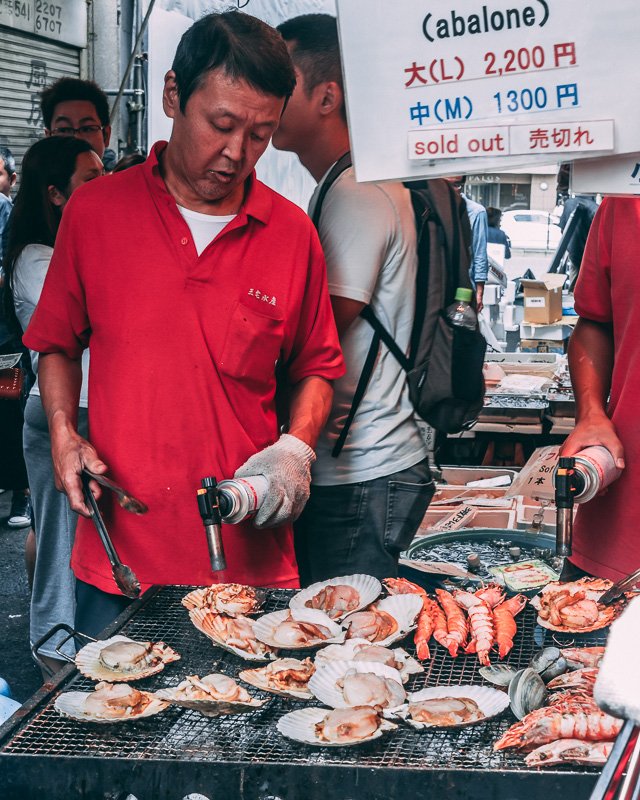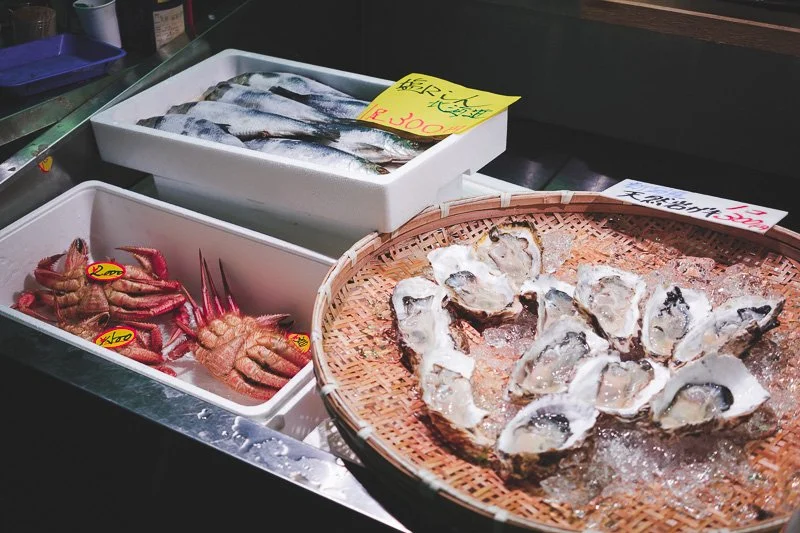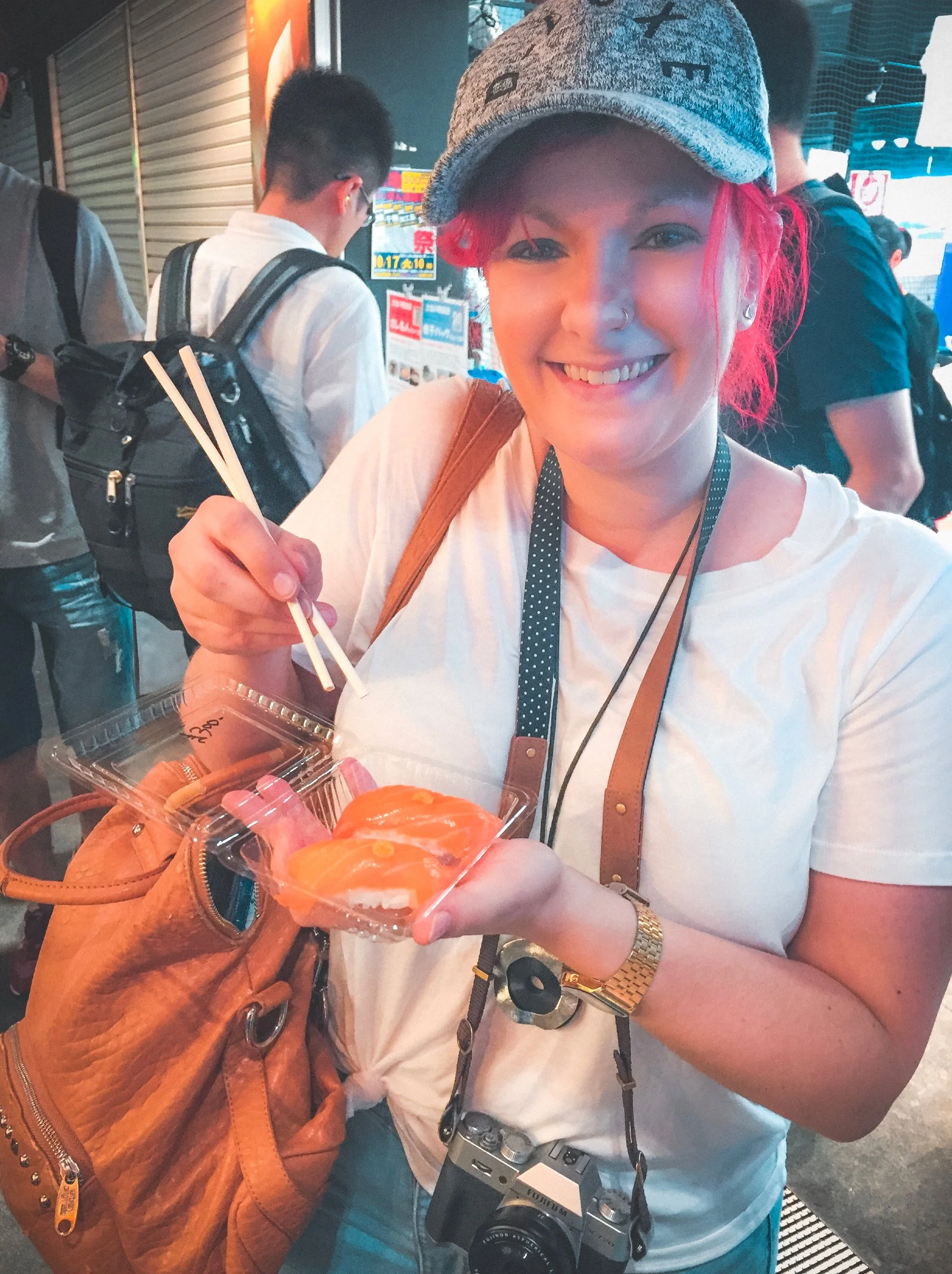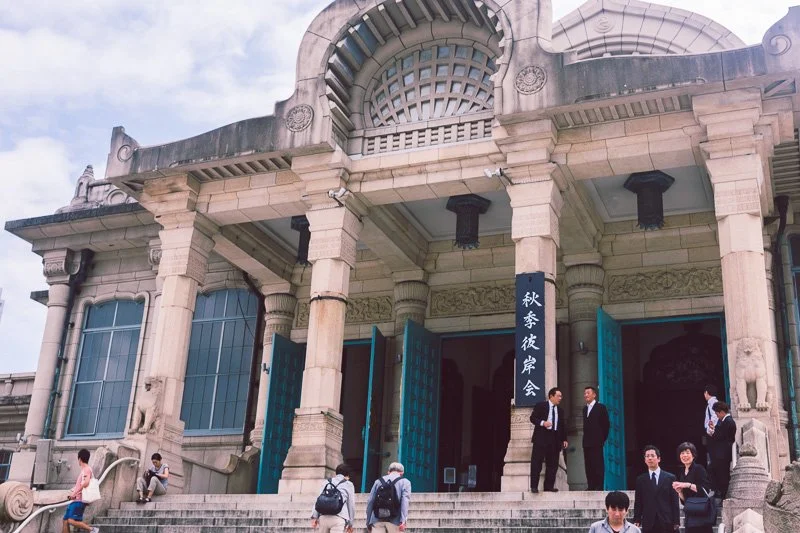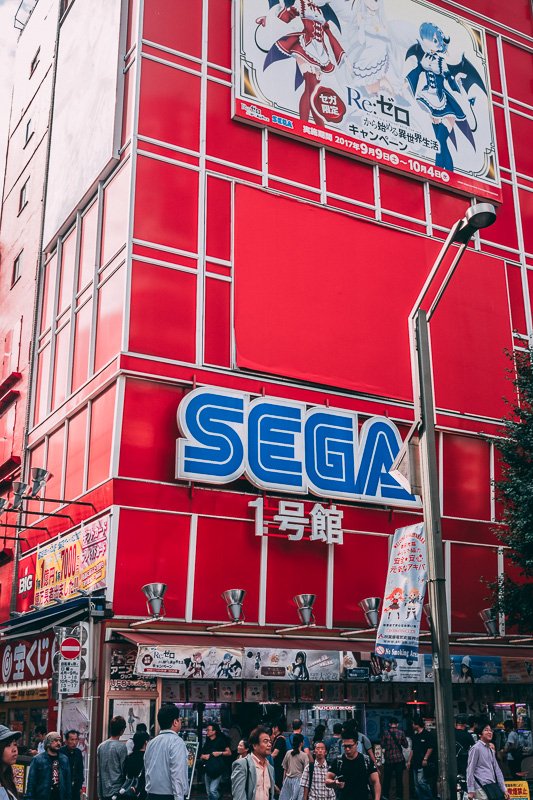One Day In Tsukiji and Akihabara
One day at Tsukiji and Akihabara is enough to make your innermost foodie and hidden nerd jump for joy. Add in a visit to the Tsukiji Hongan-ji temple, and you have a full day of excitement ahead of you. From the mad swell of people at the market, and important life-choices like which fresh seafood to try. To the intrigue of South East Asian inspired Japanese architecture. And the hustle & bustle of Akihabara, Tokyo’s ‘electric town’. Spending one day in Tsukiji and Akihabara is a must.
Tsukiji Fish Market
The biggest fish market in the world is close to extinction. A 2016 date for the closure and move of the market came and went is now due to go ahead in October 2018. Having been in its Tsukiji location since 1935, the move signals the end of an era. So if visiting the original is on the bucket list then get yourself to Japan ASAP. No matter where the market may be though, one thing’s for sure; the atmosphere is unmissable. Any creative would be hard-pressed to not feel inspired exploring the epic maze that is Tsukiji Fish Market.
Hustle & Bustle in Tsukiji
My friend and I arrived around 10am in the morning on a Sunday, when the tuna auction is closed. We weren’t fussed about that – you have to arrive as early as 3AM to even have a chance at being one of 120 tourists to enter. But we didn’t realise the wholesale area is closed on Sundays too, which was a bummer. Be sure to check the wholesale market opening times if you’re interested in seeing it. This may change between now and your visit with the move. Official info says the outer market is also closed Sundays, but we were told there’s often a few sellers open. It was my friend’s last day in Tokyo, so we took the chance and were happily surprised to find a lot of them open!
Inside of the Outer Market
Real Pic of this Fish Telling Me Where to Get the Good Sushi
My Friend Sophia Checking Out the Goods
“Tsukiji is frantic and exciting. Tight crowds of locals & tourists alike peruse fresh seafood and market stalls. The smell of charcoal from blow torched scallops, prawns and even abalone floats in the air.”
Tsukiji Vendor Blow-Torching Scallops and Shrimp
Here, quality sushi belongs to tiny street-front stalls with five or six stools. The ones with laminated menus plastered above the kitchen and hanging from the roof. There are larger, more well-known places lined with people who did a quick google search. But this is Tsukiji, it’s all about fresh, quality produce. In other words; you can go with the little guy.
Tiny Sushi Stall in Tsukiji Market
All this to say, it’s unlike any market I’ve ever been to.
Want more to love? The prices aren’t daylight robbery outrageous, they’re super reasonable. Here’s a breakdown of my faves;
Fresh Sushi!
Fresh Salmon Sushi from a fish monger inside | 300 JPY (2 pieces)
Blow Torched Scallop in the half shell | 1000 JPY (FOR A HUGE-ASS SCALLOP!)
Tamagoyaki (Japanese Sweet Omelet) | 100 JPY
Fresh as! Goods on ice at Tsukiji Market
Huge-ass scallops
My first real, raw fish sushi. Salmon. Delish!
Blow-torching scallops and prawns
Tsukiji Hongan-ji Temple
A quick stop by Hongan–ji Temple is a must if you’re spending one day in Tsukiji and Akihabara and the surrounds. It’s a Jodo Shinshu Buddhist Temple, with three fascinating facts;
Tsukiji Hongan-ji Temple
Third time lucky: The Monshu (head of the monostary) had its predecessor built in Asakusa, which burnt down in the 1600’s. Its replacement moved to the current location, only for the Great Kanto earthquake of 1923 to flatten it. Finally, it was rebuilt in the early 1930’s and that version remains standing today. Thank – ah, Buddha? – that they didn’t give up. Because we’re brought to the second cool thing about Hongan–ji.
Architecture Lovers Rejoice: It’s one of the most interesting pieces of temple architecture in Japan. Why? Itō Chūta – the architect – designed it with ancient Indian temples in mind. Hongan-Ji looks as if plucked from ancient India and dropped in Tokyo. See if you can spot other styles; such as the Roman-esque stairs, or elements of Ottoman architecture. There’s even a German pipe organ and stained glass (lotus flower) windows to boot.
Rockstar Status: There’s a memorial for Japanese rockstar hide from the band X Japan in the main hall. Around 50,000 people attended his funeral there in 1998.
What Buddhism? Jodo Shinshu Buddhism – or Shin Buddhism – is the most practiced type of Buddism in Japan. Followed commonly by everyday people, who don’t have time for strict monastic practise or merit building activities, it focuses on devotion to Buddha rather than trying to achieve one’s own enlightenment. Shin Buddhism discourages many traditional Buddhist practices except the nembutsu or chant. This is to express their gratitude towards Amida Buddha, and his original vow to save all beings who faithfully call his name.
““Namu Amida Butsu“
“I TAKE REFUGE IN AMITĀBHA BUDDHA””
Hongan-ji is so intriguing that you can’t help but be drawn inside. Sit in on a service if you can; the monks calm, constant chanting – paired with fragrant incense – is super relaxing and helps clear you mind and put you in a restful daze. Whether you’re chasing a sense of spiritual or creative enlightenment, this is the place to do it.
Listen to the Nembutsu chanting at a Tsukiji Hongan-ji service.
Remember, it’s an active temple, and also holds funerals, so please be quiet and respectful of patrons when visiting.
Basically, don’t do anything that’d make your parents give you the eyebrows of disappointment.
Friendly & charming locals. The people were nice too!
Akihabara
Akihabara’s main Streets are closed off on Sundays for pedestrians
Akihabara – Tokyo’s ‘Electric Town’ – is a mecca for Otaku (fangirl/fanboy) culture, arcades and all things – well – electric. Sundays are a great day to visit Akihabara because they close off the main streets. The Japanese name for this – Hokousha Tengoku – translates to ‘pedestrian heaven’. Here you can let your geek flag fly. Whether you want to pick up a retro gaming console, browse manga and Anime DVD stores, or eat at a Gundam cafe.
“Akihabara is full of the delightfully weird, unapologetically kitsch, and slightly risqué.”
Sure, maid cafes and idol culture aren’t everybody’s thing, but there’s so much more to this area than that. Plus, it’s Tokyo! You should visit every district once. I personally wouldn’t dedicate an entire day to it, but as a part of exploring both Tsukiji and Akihabara, it was fun.
Akihabara Sundays
Crazy Crepes in Action!
Stopping for dessert! Crazy crepes in Akihabara
The complete sensory overload of Akihabara also makes it a great source of creative stimulation. Standout activities include;
Entering a Pachinko parlor to see how long you can stay inside. These deafeningly loud, hectic and brightly neon-lit gambling parlours look like arcades on cocaine. Mechanical gaming machines dispense balls. Balls are exchanged for prizes. Prizes can be exchanged elsewhere for money. This gets around the illegal nature of gambling for cash in Japan. Sounds fun to try, sure, but I dare you to see how long you can stay inside a pachinko parlour. And for the love of all that is good in this world.
Don’t enter one with a hangover. You’ve been warned.
Crazy Pachinko Parlour
Find some peace at Hanabusa Shrine. This tiny “secret” shrine is hidden in a back alley of Akihabara, squished between two buildings. You can see it on google maps; but we tried and failed to find it. All on account of google maps going haywire. The sound from a Pachinko parlour probably confused it…
Be a kid again in one of many arcades.
The bright red exterior of Club Sega is iconic in Akihabara, the upper floors are where you’ll find arcade games, including retro titles. Tokyo Leisureland focuses on present-day titles and even has a whole floor dedicated to music games. Taito HEY has a huge collection of classic shooter games, and seems to be where the proper gamers go to play.
Club Sega – Modern Icon
Watch a skilled professional – aka local teenager – thrash at Taiko Master. This drumming game looks way easier than it is I know from experience. The dude we saw was definitely a pro, he even brought his own drum sticks! One of the fastest arcade games I’ve ever seen.
Loose money playing the UFO Catchers / Skill Testers. UFO Catchers are more of a gamble than Pachinko will ever be. Club Sega has three floors of these for your endless frustration enjoyment.
Get a Gachapon to lessen the sting of wasting money on the aforementioned UFO Catchers. At least this way you’re guaranteed a prize. These capsule toys also make amazing gifts.
Hit up the local Donki. There are plenty of Don Quixote locations but only this one has a cosplay level and dedicated AKB48 theatre. AKB48 are a popular girl band/idol group with 48 members.
Wax nostalgic at Super Potato. Here you can buy retro gaming consoles, controllers, games…you name it they probably have it. Better still? There’s a whole floor of cheap retro arcade games you can play.
Well there you have it. Between the rush of the fish market, atmosphere of the Temple, and hectic craziness of Tokyo’s Electric Town, there’s no shortage of excitement. Spending one day in Tsukiji and Akihabara is the perfect way to feel the hype and really experience the Tokyo crowds in action.
Want to get off the beaten track instead?
Check out my series: Japan off the Beaten Path
Have you been to Tsukiji Market, Hongan-ji Temple or Akihabara?
What was your favourite part? Let me know in the comments!






